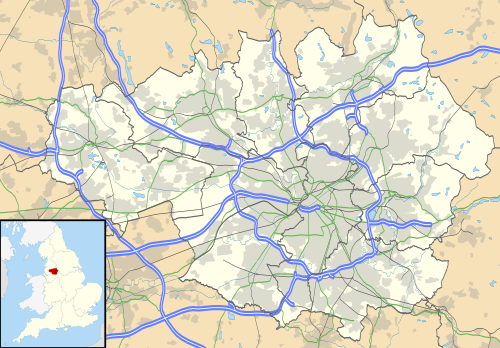Some of the larger settlements of Greater Manchester.
This is a partial list of places in Greater Manchester , in North West England.
Contents
- Metropolitan boroughs and components
- Civil parishes
- Parliamentary constituencies
- Bodies of water
- Rivers
- Canals
- Reservoirs
- Docks
- Hills, valleys, moorland and mosses
- Notable buildings
- Places of worship
- Schools and colleges
- Roads and streets
- Motorways
- Notable roads
- Parks, commons and open space
- Country parks
- Squares and gardens
- Cemeteries
- Public transport
- Railway stations
- Airports
- References






